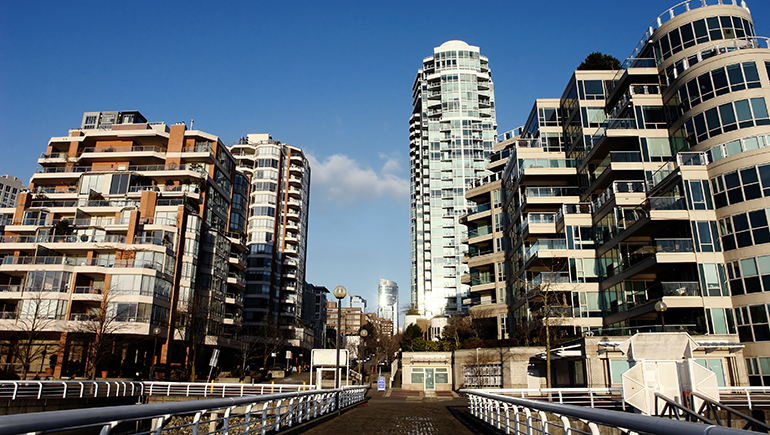Local stats help your business: Metro Vancouver Housing Data Book
At a glance (4 minute read):
- Metro Vancouver's population is 2,642,825, with one-person households at 29 per cent. White Rock, Belcarra, and West Vancouver have the highest senior percentages.
- Ownership rate has decreased to 62 per cent since 2016.
- Homeowners' median income is 60 per cent higher than renters. Three-quarters of owners exceed the regional median ($90,000).

Metro Vancouver has updated its Housing Data Book, now available at no cost.
The 198-page book consolidates valuable regional and municipal data on the housing market – from population trends to household income to ownership and rental information, and more.
Highlights
Population
- Metro Vancouver’s population has reached 2,642,825 residents.
- One-person households are the largest group, representing 29 per cent of all households.
- White Rock (37 per cent), Belcarra (31 per cent) and West Vancouver (29 per cent) had the greatest percentage of seniors and the highest median ages.
The highest rate of population growth since 2016:
- Tsawwassen First Nation (176.7 per cent);
- Bowen Island (15.8 per cent); and
- Electoral Area A (15.4 per cent). Electoral Area A includes UBC, Barnston Island, the West Side of Pitt Lake and areas along Howe Sound between West Vancouver and Squamish-Lillooet Regional District (excluding Lions Bay).
Renting versus owning and incomes
- The trend toward renting continues with the share of owners decreasing to 62 per cent (from 64 per cent in 2016) and the share of renters increasing to 38 per cent.
Community |
Total households |
Owner |
Renter |
Dwelling provided by First Nation |
|---|---|---|---|---|
Anmore |
745 |
680 |
65 |
0 |
Belcarra |
265 |
235 |
30 |
0 |
Bowen Island |
1,725 |
1,465 |
250 |
0 |
Burnaby |
101,135 |
61,185 |
39,950 |
0 |
Coquitlam |
55,950 |
38,790 |
17,155 |
0 |
Delta |
38,055 |
28,785 |
28,785 |
0 |
Electoral Area A |
7,670 |
27,785 |
9,275 |
0 |
Lions Bay |
505 |
445 |
60 |
0 |
Maple Ridge |
33,110 |
26,205 |
6,910 |
0 |
New Westminster |
36,095 |
19,740 |
16,360 |
0 |
North Vancouver City |
27,295 |
14,535 |
12,775 |
0 |
North Vancouver District |
32,700 |
24,990 |
7,710 |
0 |
Pitt Meadows |
7,405 |
5,885 |
1,520 |
0 |
Port Coquitlam |
22,880 |
17,645 |
5,235 |
0 |
Port Moody |
13,110 |
9,905 |
3,210 |
0 |
Richmond |
81,080 |
57,800 |
23,275 |
0 |
Tsawwassen First Nation |
930 |
715 |
175 |
45 |
Vancouver |
305,335 |
138,845 |
166,490 |
0 |
West Vancouver |
17,690 |
12,535 |
5,150 |
0 |
Income
- The median household income of homeowners in Metro Vancouver was 60 per cent greater than the income of renters.
- In Metro Vancouver, three-quarters of owner households had incomes over the regional median household income ($90,000).
- Anmore, Belcarra, Lions Bay, and the District of North Vancouver have larger proportions of homeowners with incomes $90,000 or more.
- Electoral Area A (includes UBC) and Richmond have larger proportions of homeowners making less than $90,000.
- For homeowners, median incomes varied from $78,500 in Electoral Area A (including UBC) to $170,000 in Anmore.
- For renters, median incomes ranged from $51,600 in Electoral Area A (including UBC) to a high of $135,000 in Lions Bay.
Households
There are 1,104,532 private dwellings in Metro Vancouver, of which 94 per cent are occupied. The remainder are empty or occupied temporarily.
- Single detached homes represented 27.7 per cent of the housing stock, and increased by just 2.3 per cent from 2016 to 2021.
- In 2021, there were 452,835 apartment units in Metro Vancouver, representing 43.4 per cent of the occupied housing stock. The number of apartments increased by 12.6 per cent since the last census in 2016.
- Rowhouses, or townhouses, despite representing the smallest segment of the housing stock at 10.2 per cent, outpaced all other structure types, increasing by 13.4 per cent since the last census in 2016.
The distribution of housing stock varies significantly across the region. Electoral Area A and New Westminster had the highest proportion of apartments.
Construction
- Regional housing construction has increased – 59 per cent for condo and multi-unit developments, primarily apartments.
For detailed, comprehensive data on population, households and more, read:
- Metro Vancouver Housing Data Book, December 2023 (opens 187-page pdf)
- Metro Vancouver Housing Data Book, December 2023 (interactive, online version, click on arrows)
Data sources
The Housing Data Book contains information from Statistics Canada, Canada Mortgage and Housing Corporation, BC Housing, the Co-operative Housing Federation of BC, the BC Non-Profit Housing Association, local real estate associations, member jurisdictions, and the 2021 and 2016 Census.